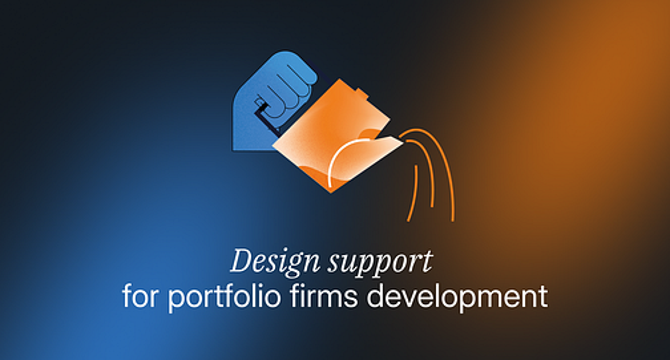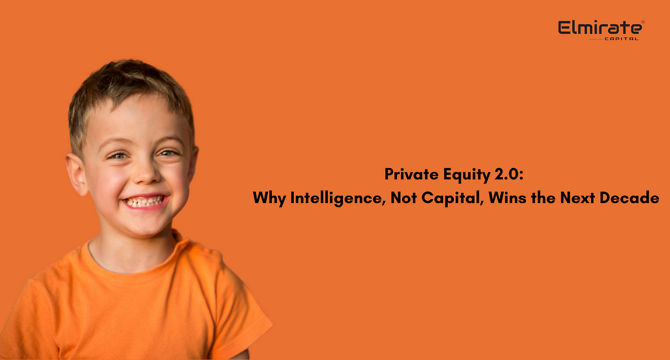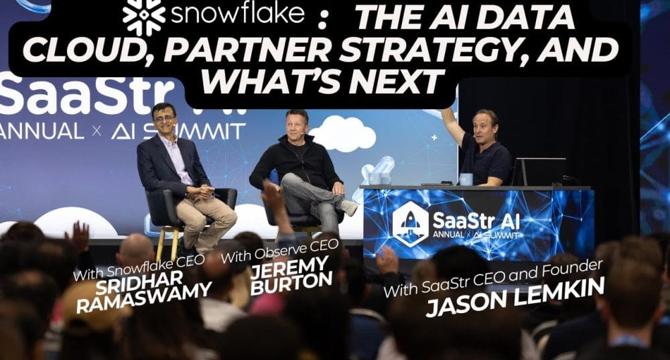Venture Capital News
Medium
419

Image Credit: Medium
Why Cloud IDEs Stalled and What Comes Next for Developer Infrastructure
- A Gitpod State of Cloud Development Survey in 2023 found that while 62% of developers tried cloud IDEs, only 14% used them regularly, with performance concerns, lack of offline support, and complex setup as main barriers.
- The 2024 Stack Overflow Developer Survey revealed that 73.6% of developers use VS Code, showing a preference for traditional local IDEs over cloud-based alternatives.
- Cloud IDEs have not revolutionized collaborative coding as expected and are seen as a 'packaging solution' rather than truly innovative.
- The increasing complexity and technical debt of coding environments in the cloud hinder collaboration and onboarding new developers efficiently.
- There is a need for a 'developer roadmap' for the cloud, providing a universal developer experience across various hardware, cloud providers, IDEs, languages, and repositories.
- Daytona is a company working on such a roadmap, aiming to streamline development environments by automating setup, managing configurations, and standardizing workflows across teams.
- Daytona does not replace local tools but focuses on eliminating configuration drift, reducing onboarding time, and enhancing standardization within engineering teams.
- By integrating with GitHub and VS Code, Daytona simplifies development by providing consistent workspaces and automating setup processes.
- Daytona's simplicity lies in serving as a link between code, containers, and collaboration, offering faster onboarding, reducing bugs, and minimizing the need for specialized knowledge in managing coding environments.
Read Full Article
25 Likes
Medium
66

Image Credit: Medium
The J-Curve Divergence: Standard VC vs. Deep Tech VC Performance
- The J-curve depicts the performance of a VC fund over time, with an initial decline followed by exponential growth from successful investments.
- Standard VC firms focus on high-growth potential ventures like software, internet, and consumer goods with faster development cycles.
- Standard VC J-curves show steeper initial declines but quicker ascents due to faster exits and shorter development cycles.
- Deep-tech VC firms invest in innovative ventures requiring significant R&D in fields like AI, biotechnology, and cleantech.
- Deep Tech J-curves have deeper initial declines and prolonged growth phases due to complexities in deep-tech ventures and breakthrough science.
- Factors beyond industry differences influence VC J-curve shapes, affecting the trajectory of returns for different types of VC firms.
- Standard VC focuses on a broader range of companies with potentially lower returns, while deep-tech VC faces higher risks but offers higher return potential.
- The evolving VC landscape, including advancements in AI and thematic VC firms, may blur the lines between standard VC and deep-tech VC.
- Understanding the J-curve differences is crucial for investors and founders in making informed decisions about capital allocation and partnership choices.
Read Full Article
3 Likes
VC Cafe
424

Image Credit: VC Cafe
Weekly Firgun Newsletter – June 20 2025
- The newsletter talks about the concept of 'Firgun' in Israeli culture, highlighting genuine delight in others' accomplishments.
- Focus on the current situation in Israel with regards to threats from Iran and the resilience of Israeli tech startups amidst adversities.
- Updates on tech world activities such as Mark Zuckerberg's pursuits for AI talent and various product launches.
- Highlights of new funding rounds and exits in the startup ecosystem.
- Provided quotes of the week, news, and insights from the Israeli and global tech landscapes.
- Media coverage of events like the Paris Air Show, espionage tactics, and advancements in AI technology.
- Shares interesting links and discussions on various tech and startup-related topics.
- Mentions of comic relief and wishes for a peaceful weekend in Israel.
Read Full Article
25 Likes
Saastr
393

Image Credit: Saastr
Dear SaaStr: I Just Sold My Business for $130M. Should I Stick Around?
- The writer discusses the dilemma of whether to stay or leave after selling a business for $130M, emphasizing the importance of making a strategic and personal choice.
- Staying post-acquisition allows for guiding the product's future, learning from the acquirer, financial upside through earn-outs, and experiencing stability and resources.
- However, staying means losing control as the boss, potential cultural misalignment, delaying the next venture, and dealing with burnout.
- Questions to consider include passion for the product and team, financial benefits of staying, and clarity on the next move.
- The author advises playing another card, staying for a short term if undecided, and not making emotional decisions.
- Personal experience at Adobe post-EchoSign sale highlights the learning and growth opportunities alongside the challenges of missing autonomy.
- The decision to stay post-acquisition should be thoughtfully considered to avoid regrets and ensure alignment with personal and professional goals.
Read Full Article
23 Likes
Medium
57

Image Credit: Medium
Contribution 04 — Design support for portfolio firms development
- Supporting portfolio companies' growth in venture capital involves developing design processes and capabilities for better impact and business results.
- Investment management is crucial in VC for early-stage companies to scale quickly and succeed.
- Impact VC focuses on balancing profit and impact returns, often helping companies refine their business models for impact.
- Designers in VC assist companies in building internal design capabilities rather than doing hands-on design work.
- Design in VC emphasizes fostering design capability within companies to align with their mission, vision, and values.
- Designers collaborate with startups in defining product-user fit and creating impactful experiences for users.
- In impact-driven organizations, designers leverage user research and prototyping to create impactful products and services.
- Building design capacity is critical for sustainable value creation and business success.
- Designers in impact VC must be experts in their field, able to tailor design support to each organization's needs and resources.
- Juxtapose, an investment firm, integrates design processes to enhance business value and support portfolio companies' growth.
Read Full Article
3 Likes
Medium
84

Image Credit: Medium
Why the Next $100B in PE Returns Will Come from Intelligence, Not Size
- The global private equity (PE) industry is undergoing a transformation favoring intelligence-led strategies, infrastructure, and operational agility for value creation post-2023 and 2024's challenges.
- PitchBook Q1 2025 data shows increased PE deal volumes and deal sizes, signaling a shift to strategic deployment over transactional volume in a high dry powder market.
- Intelligence is becoming the key alpha generator in PE, focusing on data, AI, and domain expertise across deal sourcing, diligence, scaling, and exits.
- Mega-deals in 2025 require intelligence integration, digital infrastructure, and business model automation for strategic rather than just capital-intensive investments.
- Challenges remain with liquidity management in PE due to lagging distributions, leading to innovative exit strategies beyond IPOs and M&A, like technology-driven solutions.
- The sectoral realignment in PE focuses on value-centric capital deployment in sectors embracing AI-native architectures, digital integration, and innovation for sustainable growth.
- Due diligence is evolving in 2025 to include intelligence architecture evaluation, synthetic scenario forecasting, and dynamic risk scoring models for long-term value creation and adaptability.
- Elmirate Capital advocates for intelligence-heavy PE investments, emphasizing AI-native platforms with real-time optimization, regulatory foresight, and cyber-physical resilience.
- The future of PE lies in scalable, defensible, and AI-native platforms that can adapt and lead in the evolving global landscape.
- The PE playbook is shifting towards intelligence, infrastructure, and digital defensibility as core aspects of investment strategy for success in a dynamic world.
- Success in PE in the coming years will depend on the integration of intelligence layers, resilient data architectures, and forward-compatible operational strategies.
Read Full Article
5 Likes
Saastr
190

Image Credit: Saastr
Welcome Back Duplo Cloud & Pylon to SaaStr Annual 2026! 🎉
- Duplo Cloud and Pylon are returning as sponsors for SaaStr Annual + AI Summit 2026, showcasing their commitment to supporting SaaS growth and innovation.
- Duplo Cloud, a 6-time sponsor, offers a DevOps automation platform that simplifies cloud infrastructure management for fast-growing companies, enabling accelerated time-to-market, reduced operational costs, and enhanced compliance and security.
- Pylon, returning for the 2nd time, is a modern support platform tailored for B2B companies, streamlining customer support through features like a unified inbox, AI-powered automation, customer relationship management, and integrations with existing tech stack.
- Both Duplo Cloud and Pylon cater to the unique needs of B2B companies, offering solutions that address common challenges and enhance operational efficiency.
- SaaStr Annual + AI Summit 2026 and SaaStr AI London in December 2025 provide opportunities to connect with industry leaders, learn, and accelerate B2B growth.
Read Full Article
11 Likes
Medium
185

Image Credit: Medium
90% startups don’t need to fail: venture studios like us can help
- Venture studios help build new businesses by defining problems, finding opportunities, funding, and providing hands-on support.
- Startup failure rates are often attributed to timing, team quality, idea execution, and occasionally lack of funding.
- Venture studios aim to address failure points by investing in rigorous analysis, assembling skilled teams, and providing technical and operational support.
- These studios are designed to help startups succeed by focusing on market and problem analysis, product development, fundraising, and operational tasks.
- They are patient and offer long-term support compared to traditional startup programs.
- Venture studios have shown higher success rates, faster funding rounds, and increased investment returns compared to traditional support models.
- Studio-supported startups have raised more funds, reached Series A faster, and delivered higher investment returns.
- Despite positive statistics, the effectiveness of venture studios can vary and needs to be continuously evaluated.
- Startup founders in Southern Africa can be part of the venture studio model to increase their chances of success.
- By providing the right support, venture studios aim to change the narrative of high startup failure rates and increase success stories.
Read Full Article
11 Likes
Saastr
141

Image Credit: Saastr
The Top 3 Reasons AI Sales Tools “Don’t Work” (Spoiler: They Actually Do)
- AI sales tools can be highly effective if used properly and consistently.
- Training AI tools is a crucial and iterative process that requires detailed input like persona information and objection handling.
- Regular QA checks are essential to ensure AI-generated outputs align with brand voice, accuracy, and compliance.
- Expecting AI tools to do everything without proper training and oversight leads to failures.
- Effective AI implementations complement human expertise rather than replacing it entirely.
- Treating AI as a force multiplier for sales teams can lead to significant increases in qualified meetings.
- The key is to adjust expectations, master one use case at a time, and invest time in training and optimizing AI tools.
- AI sales tools work well when integrated strategically and seen as tools requiring ongoing development and refinement.
- Success with AI tools comes from investing time in training, consistent quality assurance, and viewing AI as a long-term strategic capability.
- By fixing the process and treating AI tools as sophisticated tools, significant improvements in sales results can be achieved.
Read Full Article
8 Likes
Medium
79

Image Credit: Medium
No Is a No: When & Whether to Ask Why
- Receiving a 'no' in different professional situations can lead to the natural instinct of wanting to know why, but the honesty behind the rejection may vary.
- In industries like tech, investment, and consulting, rejections are often softened with polite or vague responses that may not reflect the true reasons.
- Asking for feedback may not always result in honest answers, as people tend to avoid causing discomfort or engaging in a debate.
- Learning to accept a 'no' without seeking detailed justifications can be empowering and help in moving forward to improve ideas.
- The value may lie not in the reasons given for rejection, but in how one chooses to respond to it by refining ideas and seeking understanding elsewhere.
- Continuing to progress despite rejections can lead to receiving valuable feedback later on, showing resilience and dedication to growth.
- Rather than focusing on extracting the truth from rejections, the key is to build something of such high quality that others regret saying 'no' initially.
- It is important to ask why when there is potential gain, but also crucial to remember that not all feedback will be completely transparent.
- Allowing 'no' responses to drive one towards creating something better can be a powerful motivator for growth and success.
Read Full Article
4 Likes
Saastr
274

Image Credit: Saastr
The $4.5B Board Meeting: Inside Snowflake’s AI Transformation and the CEO Who Bets His Company on Their Platform
- The article provides insights into Snowflake's board meetings, showcasing how AI is shaping enterprise data and B2B partnerships.
- Key takeaways include the impact of consumption revenue recognition, the shift in technical sales requirements, and the importance of strategic partnerships with internal champions.
- Snowflake aims to become the AI data cloud, enabling natural language interactions with enterprise data and focusing on making data accessible to business users.
- The article discusses the future direction of Snowflake, emphasizing the CFO test, the role of business users in consumption growth, and the development of agent AI for autonomous business intelligence.
- It highlights the unique consumption-based revenue model of Snowflake, where revenue is recognized only when customers consume credits, leading to a focus on use case creation over deal size.
- Snowflake separates teams for new customer acquisition and account growth, with a specialized approach to managing large accounts and understanding customer architecture.
- The article also delves into the evolving technical requirements for enterprise sales in the AI era, emphasizing the need for deep technical and business application knowledge.
- Insights from Observe's commitment to Snowflake as a platform partner demonstrate the value of total commitment and the impact of strategic partnerships with internal champions.
- The future of data engineering and DevOps is explored, highlighting the expected shifts for roles like data engineers, data analysts, and DevOps engineers in the next 12-18 months.
- Key takeaways for B2B leaders include understanding consumption models, meeting technical sales requirements, committing fully to platform partnerships, and leveraging AI for reshaping technical roles.
- The article concludes by emphasizing how companies that grasp these shifts will excel in capturing the AI-driven enterprise opportunity, underlining the importance of real boardroom discussions.
Read Full Article
16 Likes
VC Cafe
150

Image Credit: VC Cafe
Loneliness is Driving adoption of AI Companions
- Loneliness is a growing concern, with significant health implications comparable to smoking.
- A substantial percentage of adults experience loneliness regularly, with young people being particularly affected.
- Social isolation increases the risk of premature death, leading to a rise in the adoption of AI companions for companionship.
- AI companionship and therapy are becoming the primary use case for generative AI, addressing the need for meaningful connections.
- AI companion apps offer significant engagement and fulfill psychological needs for users, especially among younger demographics.
- The landscape of AI companion apps is expanding, with a focus on various use cases beyond romantic relationships.
- The rise of AI companions presents both opportunities and risks in areas such as mental health, privacy, and societal cohesion.
- While concerns exist, AI companions are seen as a supplement to human connection, providing comfort and support in an increasingly isolated world.
- The future of AI companions includes innovations in multi-modal interactions and AI adaptations of real people.
- The market for AI companions is poised for growth and transformation, offering opportunities for investment and advancement in human-computer interaction.
Read Full Article
9 Likes
Eu-Startups
336

EU-Startups Podcast | Episode 122: Miki Yokoyama, Managing Director and Partner at Aurum Impact
- In episode 122 of the EU-Startups Podcast, Miki Yokoyama from Aurum Impact discusses the role of family offices in climate innovation.
- Focus on impact should prioritize 'what' is being done over 'how' it's done.
- Environmental challenges require systemic thinking.
- There is a crucial need for standardized impact metrics.
- Empathy plays a crucial role in successful investing and leadership.
- Long-term climate funding should consider the true cost of nature.
- Topics include choosing fund managers, impact measurement, and understanding corporate structures.
- Investors, founders, and those interested in climate action will find this episode insightful.
- Miki Yokoyama shares insights on how capital can drive positive change.
- The episode delves into the intersection of family offices and climate innovation.
- This conversation highlights challenges and opportunities in funding meaningful climate action.
- Understanding the 'what' of impact is emphasized in this discussion.
- The podcast explores the impact of family offices on climate capital.
- Listeners gain a unique perspective on investing in startups and funds.
- This episode underscores the importance of long-term thinking in climate investments.
- The episode concludes by discussing the role of empathy in successful investments.
Read Full Article
20 Likes
Saastr
97

Image Credit: Saastr
Dear SaaStr: How Do I Get a Job as a First Time VP of Sales?
- To become a successful first-time VP of Sales, focus on delivering results and scaling a team.
- Key points include proving your ability to hit quotas, showcasing your recruitment skills, and highlighting your experience in scaling companies.
- Networking is crucial for VP of Sales roles, as most hires happen through referrals.
- During interviews, emphasize your sales abilities and demonstrate your potential value to the company.
- Having top-performing team members willing to follow you is a significant advantage in landing a VP of Sales role.
- Patience and persistence are essential as these roles are not always readily available. Focus on building skills and expanding your network.
- Avoid making the conversation solely about compensation; focus on building trust and showcasing your value as a leader.
- Founder CEOs prioritize hiring someone they trust and can work closely with on a daily basis.
- Engage with the SaaStr community and attend relevant events to enhance visibility and opportunities.
Read Full Article
5 Likes
Insider
234
Image Credit: Insider
I'm a VC founder. Here's a day in my life, from coffee and emails at 4 a.m. to taking a Waymo to dance class at noon
- Kate McAndrew, co-founder of Baukunst VC firm, follows a structured routine around her son and dance classes, starting her day at 4 a.m. for 'deep work.'
- She emphasizes planning based on natural rhythms, including reading with her son, having a green smoothie, and incorporating dance classes into her schedule.
- Walking with a weighted vest and utilizing a Waymo for commuting to dance class highlight her efficient lifestyle choices.
- Having lunch at a nearby store, engaging in back-to-back calls, focused work, and networking activities make up her workday.
- She ends her day at a wine bar, prioritizes family time with her son, and acknowledges the need for constant iteration in balancing life and work.
Read Full Article
14 Likes
For uninterrupted reading, download the app